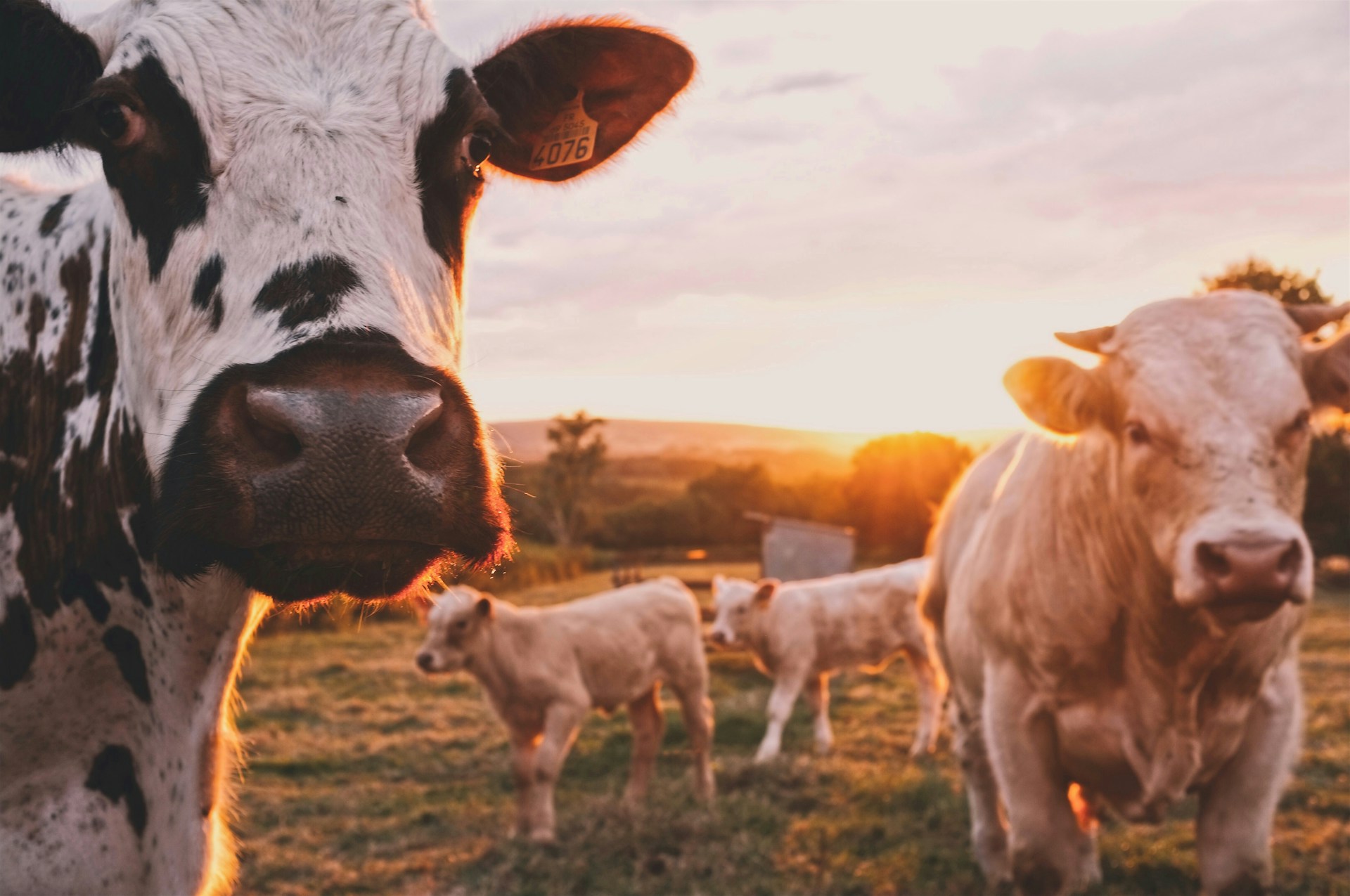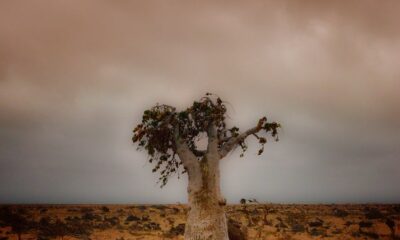Preparedness
Master Winter Power Outages with Essential Prep Tips

When winter storms strike, power outages can be a common, albeit inconvenient, occurrence. However, with a bit of foresight and preparation, you can mitigate the discomfort of these short-term disruptions. The key is to have a plan in place before the lights go out, ensuring that you’re not left scrambling in the dark for essentials like light sources, heat, and food.
A well-prepared “blackout” kit is your first line of defense against the chaos of a power outage. This kit, which can be stored in a bag or tote, should be easily accessible even in the dark. While your cell phone’s flashlight might be a handy tool, relying on it can quickly drain your battery. Therefore, it’s crucial to know how to reach your blackout kit without incident.
Light is a primary concern during any power outage. Your kit should include a variety of lighting options, such as flashlights and headlamps for hands-free use, and a lantern for omni-directional illumination. “At least one flashlight and headlamp per person is recommended.” For families with children, glowsticks can add a bit of fun to the situation. If space allows, solar-powered lighting is a sustainable option, though it may not be feasible for apartment dwellers with limited sunlight exposure. Importantly, candles should be avoided due to the fire hazard they pose, as demonstrated by a tragic incident involving an elderly neighbor during an ice storm.
Having extra batteries for all your flashlights is essential. There’s nothing worse than discovering a dead flashlight when you need it most. Aim to store at least one extra set of batteries, or better yet, two. Limiting your devices to one or two battery types can simplify this process. For an added layer of preparedness, consider including a solar charger and rechargeable batteries in your kit.
In addition to lighting, a combustion device like matches, a BBQ lighter, or a simple BIC lighter is useful, especially if you have a gas stove that may require manual ignition. These items are also handy for heating and cooking, which we’ll explore further.
Staying informed during a power outage is crucial, so a battery-operated or wind-up radio should be part of your kit. “A hand-cranked combo unit that gives you light, USB charging plus a radio too would be a good choice.” This not only keeps you updated on the situation but also provides a morale boost by connecting you to the outside world.
For longer outages, heating becomes a priority. Ideally, a wood stove installed beforehand can address both heating and cooking needs, provided you have a wood supply. If that’s not an option, a fireplace can offer some warmth, though it’s less efficient. To conserve heat, close all vents and doors, and minimize trips outside. Selecting a single room, such as a master bedroom, for everyone to gather can also help retain warmth. Block drafts with towels and cover windows or glass doors with plastic sheeting.
Dressing in layers is crucial for maintaining body warmth. “Warm socks that go up above the calf but that aren’t tight are recommended,” and wearing a stocking hat can further reduce heat loss. For families without a suitable room, “camping” in the living room can be an adventurous alternative, complete with tents or blanket forts.
Sleeping bags are invaluable for keeping everyone warm, and if they’re compatible, zipping two together allows for shared body heat. Don’t forget about your pets, who can also contribute to warmth. For pets in cages or aquariums, wrapping their enclosures with blankets can help conserve heat, and a battery-operated heater or bubbler is a wise investment.
While candles can provide some warmth, they should never be used while sleeping. Instead, portable, non-electric space heaters are a safer option. Ensure any propane heaters are rated for indoor use to avoid carbon monoxide buildup, and always maintain proper ventilation. A working carbon monoxide detector is a must when using any combustion-based heating.
Cooking during a power outage requires some creativity. If you have a wood stove, fireplace, or gas range, you’re in luck. Otherwise, a BBQ or camp stove can be used in a well-ventilated area like a garage with the door partially open. It’s critical to avoid using charcoal or kerosene indoors due to the rapid buildup of CO2.
For indoor cooking, a sterno or “canned heat” stove is a safe bet. These canisters burn long enough to prepare simple meals like scrambled eggs or heated soups. Alternatively, a denatured alcohol stove provides clean-burning heat without the risk of gas leaks, though it requires cooling before refueling.
By organizing and storing your supplies in an easily accessible location, you can significantly ease the stress of a short-term power outage. With a bit of planning, you can also expand your preparations for longer-lasting disruptions, ensuring you’re ready for whatever winter throws your way.
Let us know what you think, please share your thoughts in the comments below.

Preparedness
Discover Nature’s Secret Weapons for Wound Healing

Modern medicine has undeniably transformed healthcare, offering life-saving treatments and improved quality of life. However, nature also provides an array of resources that can aid in maintaining and restoring health, especially when it comes to wound healing. Here, we explore five natural remedies that can effectively assist in wound care, alongside five methods that should be approached with caution.
While antibiotics are crucial in combating bacterial infections, their overuse can lead to antibiotic resistance. This is a significant concern, with the Centers for Disease Control and Prevention (CDC) highlighting it as “one of the world’s most pressing public health problems.” For those seeking alternatives, peppermint essential oil shows promise. A 2019 study revealed that peppermint essential oil, when used correctly, “ha[d] the potential for applications in antibiotic-free bacterial infection treatment as wound healing materials.”
Aloe vera, often referred to as America’s favorite succulent, is renowned for its ability to protect and heal the skin. A comprehensive review of 23 studies in 2019 confirmed Aloe vera’s efficacy in treating various wounds, including burns and chronic wounds like pressure ulcers. However, it’s important to note that Aloe vera should not be used on severe wounds or deep cuts.
Onions have been used in traditional remedies for centuries, dating back to the Roman Empire. Modern research supports the use of onion extract in wound care, as it can “accelerate acute wound repair” and minimize scarring, particularly hypertrophic and keloid scars. These scars are characterized by reddish nodules at the wound site.
Garlic, another ancient remedy, boasts a history of medicinal use dating back to 1,500 BC. It was even found in Tutankhamen’s tomb. Garlic’s wound-healing properties are largely attributed to “allicin,” a molecule with antioxidant and anti-inflammatory effects. Studies indicate that garlic ointment can stimulate fibroblasts, which play a crucial role in organizing and accelerating wound repair.
Turmeric, celebrated for its medicinal compounds known as “curcuminoids,” offers powerful anti-inflammatory and antioxidant benefits. Research has demonstrated that curcumin possesses “significant wound healing properties,” acting on various stages of the healing process. However, while topical application is beneficial, orally ingesting turmeric for wound healing is not recommended due to potential side effects, such as uterine bleeding or contractions in pregnant women.
While these natural remedies offer promising benefits, some traditional methods should be avoided. St. John’s wort, although useful in some medical applications, can dangerously interact with several medications. In some countries, its use is restricted or banned without a prescription.
Egg whites, sometimes used as a home remedy for burns, pose a risk due to their high bacterial content, including salmonella. This makes them unsuitable for application on wounds.
Similarly, using saliva to clean wounds is ill-advised. As holistic physician Svetlana Kogan, MD, notes, “Our breath and saliva have tons of bacteria which can contaminate [a] wound and lead to an infection.” Instead, wounds should be cleaned with water and properly sanitized.
Human breast milk, while shown to aid wound healing due to its bioactive components, can also transmit diseases if not handled correctly. Dr. Sarah Yamaguchi warns that “breast milk can transmit infectious diseases such as HIV,” and improper storage can introduce bacteria.
In conclusion, nature offers a wealth of effective wound-healing options. However, it’s essential to conduct thorough research and consult healthcare professionals before trying any natural remedy.
Let us know what you think, please share your thoughts in the comments below.
Preparedness
Is Your Mindset Sabotaging Your Survival Instincts?

In today’s rapidly evolving world, the skills and instincts that once enabled our ancestors to thrive have largely disappeared. Modern society has become so detached from the natural world that many individuals would struggle to survive in an environment similar to that of just a century ago. Most people today rely heavily on the artificial environments we’ve created, and without them, survival becomes a daunting challenge.
“Survival situations are not limited to the wilderness. The end of the world as you know it, can arrive at home, on your way to work, at school or in the grocery store. We are now at a place we have never been before in society. Our world is rapidly changing, as are the threats we must face.” This observation highlights the unpredictable nature of potential disasters, which can strike anywhere and at any time.
Regardless of the nature of a crisis—be it an economic collapse, an electromagnetic pulse, or another war—our basic survival needs remain unchanged. We must be prepared to meet these needs, as they are crucial to our survival in any life-altering event. While we may have little control over global events, we can focus on what is within our power. This includes making sound personal decisions, improving our fitness, and learning skills that could help us thrive when the unexpected occurs.
In the aftermath of a natural disaster, survivors often fall into two categories: those who prepared in advance and those who did not. The latter group often operates under the assumption that nothing bad will happen, despite numerous warnings. This mindset, known as normalcy bias, is a dangerous form of denial.
“Normalcy bias is a psychological state of denial people enter in the event of a disaster, as a result of which they underestimate the possibility of the disaster actually happening, and its effects on their life and property. Their denial is based on the assumption that if the disaster has not occurred until now, it will never occur.” This bias leads to a lack of preparedness, leaving individuals vulnerable when disaster strikes.
The danger of normalcy bias lies in its ability to leave people unprepared and reliant on others who have taken precautions. When denial gives way to reality, desperation sets in, often leading to chaos and unnecessary suffering.
Normalcy bias can manifest in various disaster scenarios, from minor accidents to major global events. It is thought to arise from the brain’s processing of new information under stress, leading to fixation on a single, often inadequate, solution. This can result in serious injury or death due to a lack of preparation, such as inadequate shelter, supplies, or evacuation plans.
To combat normalcy bias, it’s essential to engage in the four stages of disaster response: mitigation, preparedness, response, and recovery. The mitigation phase involves taking steps to protect people and property before a disaster occurs, such as maintaining your home and vehicle or securing insurance.
Preparedness involves planning for potential disasters, including community education and stocking essential supplies. The response phase focuses on addressing immediate threats in the aftermath of a disaster, made easier by prior planning. Finally, the recovery phase involves restoring stability in the disaster’s wake, which can take months or even years.
“Every person who prepares is one less person who panics in a crisis.” This sentiment emphasizes the importance of readiness, not just for personal survival but for the overall resilience of communities. By understanding and addressing normalcy bias, we can better protect ourselves and others when disaster strikes.
Let us know what you think, please share your thoughts in the comments below.
Preparedness
Essential First-Aid Kit Must-Haves for Your Livestock

For those dedicated to homesteading or simply caring for beloved pets, safeguarding the well-being of your animals is paramount. In survival scenarios, animals are just as susceptible to injuries as humans. It’s not a question of “if” but “when” they might get hurt. Therefore, incorporating a comprehensive first-aid kit for your livestock or domestic animals is crucial.
To ensure you’re fully prepared, here’s a checklist of essential items that should be part of your animal first-aid arsenal. If these items aren’t in your kit yet, don’t fret—it’s never too late to start.
Maintaining cleanliness is vital, especially when administering first aid. Saline solution is an excellent choice for cleaning your hands before and after tending to wounds. Additionally, it effectively clears the wound area, allowing you to assess the situation more clearly.
Following saline solution, an antibacterial solution is a must-have. Use it to clean wounds and prevent infections caused by bacteria. It also serves to sanitize your hands or any tools that come into contact with the animal’s injury.
It might seem like common sense, but don’t overlook the importance of gauze. Gauze and bandages are essential for covering open wounds, cuts, scrapes, or burns.
Once the wound is cleaned, it should be covered to prevent further bleeding and keep out dirt and germs. Ensure you have enough gauze and bandages for several days, as they require frequent changing. Stock up according to the number and size of your animals, and always add a bit more than you think you’ll need.
Spray dressing is another convenient addition to your first-aid kit. Animals are notorious for not sitting still, making it challenging to apply contact dressings.
Spray dressing offers a no-contact solution for treating minor scrapes and cuts in hard-to-reach areas or when an animal refuses to stay put. It also has antibacterial properties and aids in scabbing.
Animals have a knack for eating things they shouldn’t, which can sometimes lead to serious harm. In such cases, activated charcoal can be a lifesaver.
Available in pet-specific tablets, activated charcoal acts as a sponge for toxins ingested by your animal. If administered correctly, it can neutralize many poisonous substances. Even if your animal shows improvement, it’s crucial to contact a vet immediately.
Injured animals experience pain similarly to humans, which can make them difficult to manage. Animals react differently to pain, often becoming skittish and potentially aggressive.
Having a spare leash, muzzle, or other restraint can be invaluable for keeping an animal still while you administer treatment. Although restraining an animal is not ideal, it may be necessary to prevent them from exacerbating their injury.
Lastly, a pair of tweezers is an essential tool in your livestock first-aid kit. Tweezers are perfect for removing splinters, particularly since animals don’t wear shoes and are more prone to stepping on sharp objects.
A good pair of tweezers allows you to extract foreign objects from paws more efficiently than using your fingers, while also maintaining hand hygiene.
When planning for emergencies, always consider your animals’ needs alongside your own. You can purchase pre-made kits online or gather individual items for a custom kit.
Either way, ensure you are prepared for those who can’t prepare for themselves.
Let us know what you think, please share your thoughts in the comments below.
-

 Tactical1 year ago
Tactical1 year ago70-Year-Old Fends Off Intruder with Lead-Powered Message
-

 Tactical1 year ago
Tactical1 year agoVape Shop Employee Confronts Armed Crooks, Sends Them Running
-

 Preparedness9 months ago
Preparedness9 months agoEx-Ballerina’s Guilty Verdict Sends Tremors Through Gun-Owner Community
-

 Preparedness7 months ago
Preparedness7 months agoGood Samaritan Saves Trooper in Harrowing Interstate Confrontation
-

 Tactical1 year ago
Tactical1 year agoMidnight SUV Theft Interrupted by Armed Homeowner’s Retaliation
-

 Survival Stories2 years ago
Survival Stories2 years agoEmily’s 30-Day Experience of Being Stranded on a Desert Island
-

 Preparedness8 months ago
Preparedness8 months agoArizona Engineer’s Headless Body Found in Desert: Friend Charged
-

 Preparedness8 months ago
Preparedness8 months agoBoy Saves Dad from Bear Attack with One Perfect Shot